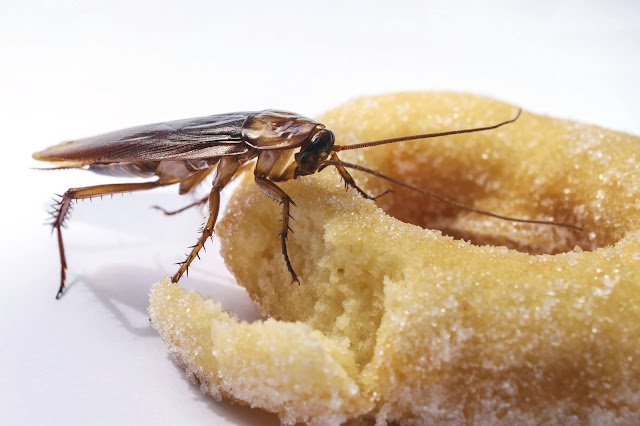Pest Control for Roaches
www.redully.com
https://twitter.com/RedullyT
Once you've taken away food and water sources for roaches, you're ready to kick them out of their nests. Using the sticky traps, you should have a good idea of where they live. Next, find any cracks or crannies in that area or places that you've seen roaches escape. Fill those gaps with a flexible caulk that prevents roaches from getting back into your living space.
Roach baits and boric acid are your next line of defense if those previous steps don't reduce the population [source: University of California Statewide Integrated Pest Management]. You can purchase boric acid as a powder and lightly dust it in the cracks you can't seal off with caulk, such as under sinks and appliances and behind cabinets. Roach baits in gel form also work well in those tricky spaces, luring the insects to them and poisoning them. Don't apply near food preparation areas and be sure to store out of reach of children and pets.
The Environmental Protection Agency only urges consumers to up the ante to pesticides as a last resort [source: EPA]. If you make that move, there's a distinction you should understand when shopping. Many of the ready-made sprays grocery stores sell are contact repellents. That means you have to actually strike a roach with the liquid to kill them. Repellents in general also won't cure your problem forever. They simply keep roaches at bay, potentially moving them to another area of the house or apartment, depending on where you live. For killing the insects, stomach poisons, such as the commonly-used boric acid or bait gels, may be more effective
There are many other pesticide categories companies offer, including:
- Desiccants: substances that dry out roaches to kill them
- Insect growth regulators: chemicals that inhibit roaches' growth and reproduction
- Ready-to-use spray: premade sprays, which are often repellents
- Emulsifiable concentrates: sort of like the frozen orange juice of pesticides. A concentrate to which you add water.
- Aerosols: most work as contact repellents
- Foggers: release a mist of pesticide that fills the air. You cannot be home during fogger applications.
Knowing where and how to apply your poisons also influences your results. For instance, thin layers of boric acid powder are more effective than thicker ones. After putting on your protective eyewear, breathing mask and gloves, you want to go back to those cracks and crevices we've been talking about. Apply your pesticides in those spaces that you weren't able to seal off with the caulk, taking care to not damage any appliances.
If, after all this effort, you flip on the switch in your kitchen and behold the skittering of roaches, don't lose hope. Many pesticides take at least a week to produce visible results. Packaging should also contain helpful information as well. Just remember that doing one thing alone will not kick roaches to the curb. When you're up against insects that outlasted dinosaurs, you'll need a multi-tiered battle plan.


Comments
Post a Comment